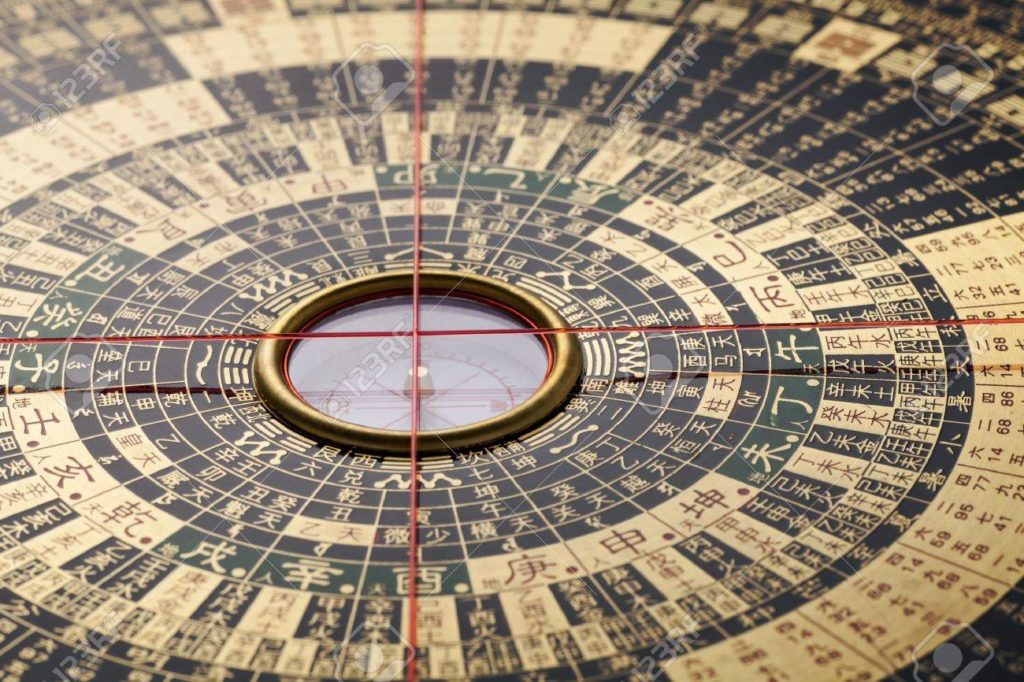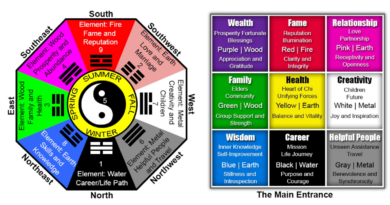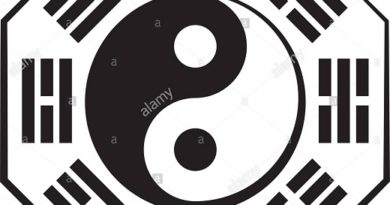FENG SHUI | ORIENTATION
Orientation is generally defined as the location of a building or site with respect to the points of a compass (cardinal directions). For determining the orientation, we normally consider the direction of the main road as the front of the site and use it as a reference to find the orientation.

In Vaastu Shastra, orientation plays an important role in deciding the planning of the house. In Feng Shui too, orientation is important, but it is essential to first determine the front of a property, and then to know which direction the front faces, right down to the last degree. In Feng Shui, the main road is not necessarily the front of the house. As an Architect, I have explained the importance of Orientation in Feng Shui and how to find the front of the structure in this post, under the following headings:
How do you find the front of the structure in Feng Shui?
Why is it important in Feng Shui to identify the front and back of the house correctly?
How do you take a compass reading in Feng Shui?
HOW DO YOU FIND THE FRONT OF THE STRUCTURE IN FENG SHUI?
Every structure has a ‘front’ and a ‘back’. The back is always magnetically opposite the front. So if the front of the house is at 5 deg, then the back is at 185 deg. In most houses the front is easy to identify – it is usually the direction the main door faces. But in Feng Shui, this isn’t always the case. The facing direction is the front that faces active energy and the sitting direction is the one exactly opposite to this. Here’s how to recognize the direction of active (lively) energy.
- The side of the house that has the most windows is most likely to be the front face of the house.
- A busy road or public footpath.
- A flowing river, but even a street resembles and is symbolic of a road.
- A playground for children.
- A swimming pool or park or garden.
A good test to find out the facing direction of an existing house- If you had to take only one photo of a house, which side would you take? Normally you will prefer to take the photo of the side that looks the most pleasing, like a side with lot of windows rather than a blank wall. So, the side that is more pleasing is the facing/front side.
WHY IS IT IMPORTANT IN FENG SHUI, TO IDENTIFY THE FRONT AND BACK OF A HOUSE CORRECTLY?
Most Feng Shui system make use of either the sitting or facing direction (plus other factors) to determine the qi distribution in a house. If you make a wrong assessment of the front and back of a house, then the subsequent assessment will be incorrect.
HOW DO YOU TAKE A COMPASS READING IN FENG SHUI?
In a plan, the arrow denoting North is not the magnetic North, but the geographical North, and should never be used in Feng shui. To find the magnetic North, you first need a compass.
- In a compass, the needle’s red part always points North. Manually rotate the dial so that the North (N) marking on the compass is aligned with the compass needle (north).
- Now trace an imaginary line 90 degrees/perpendicular to your property. The degree that the line meets on the compass tells you the direction and angle that your property ‘faces’. The ‘sitting’ direction is the degree reading that’s exactly oppsite on the dial.
- Once you have determined the face of your property, stand with your back parallel to it, facing outside.
- Remove all metal jewellery as it will interfere with the magnetic needle.
- Hold the compass at waist level.
- Stand 3 to 5 feet away from the property.
- Rotate the compass dial so that the the North (N) marking on the compass is aligned with the compass needle (north).
- Read the compass degree of the direction line on the indicator. The direction line will be the one that is perpendicular to you while you stand with your back parallel to the property.
In the next post I will explain, how to superimpose the directional chart onto a floor plan.
VASTU SHASTRA AND FENG SHUI SIMILARITY
Feng Shui is conceptually similar to its Indian counterpart “Vastu Shastra” in that, they both try to harmonize the flow of life-energy (“Chi” in Feng Shui or “Prana” in Vastu) through the house. You can read more about the Introduction to Vastu Shastra here:
If you found this post useful, I would really love it if you pin it or shape it. I have not blocked the site just because your ad blocker is switched on because I hope my content will be useful to you. But I am able to run this site only because of the ads. So I will be obliged if you turn off your ad blocker. Thank you!
Related Topics:
- Feng Shui
- Feng Shui Principles
- Feng Shui Principles Applied To A Proposed Building
- Feng Shui Principles Applied To An Existing Building




